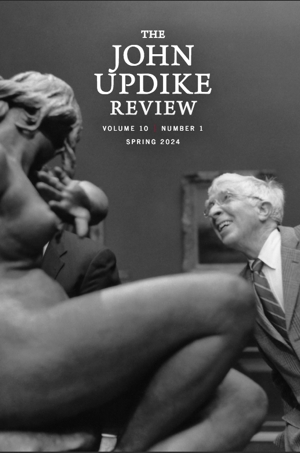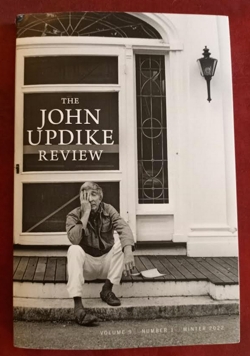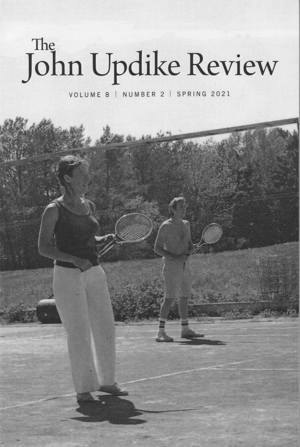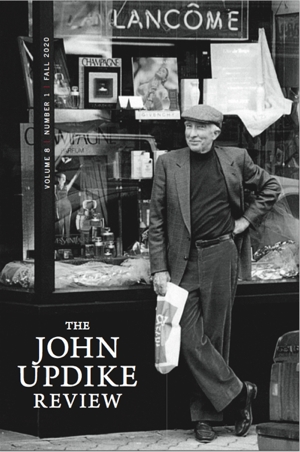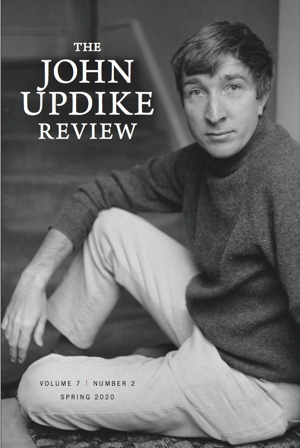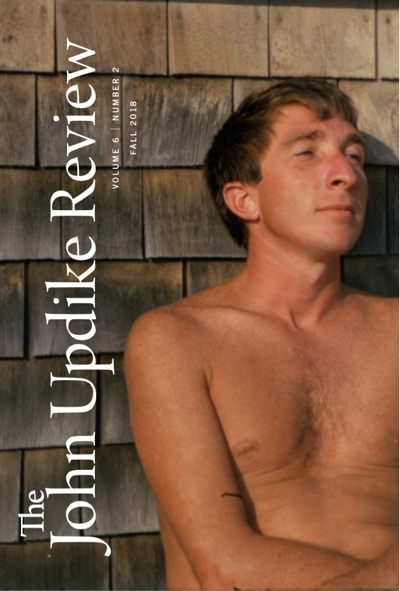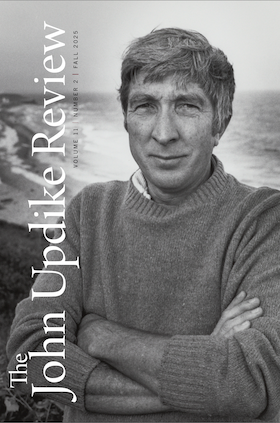 Editor James Schiff and managing editor Nicola Mason have done it again, assembling another fine issue of The John Updike Review. Volume 11: 2 (Fall 2025) that was published this week.
Editor James Schiff and managing editor Nicola Mason have done it again, assembling another fine issue of The John Updike Review. Volume 11: 2 (Fall 2025) that was published this week.
The new issue spotlights works that are written about less often than the titles Updike is best known for, featuring essays on Marry Me: A Romance (Nadia Szold); Marry Me, Couples and The Witches of Eastwick (Sylvie Mathé), Licks of Love (Peter J. Bailey); and “My Father’s Tears” and “The Laughter of the Gods” (Robert Milder).
The focus of “Three Writers On” this issue is “My Father’s Tears,” from Updike’s final short story collection by the same name, with the story reprinted by permission and short essays from D. Quentin Miller, Sue Norton, and James Schiff.
As always, members of The John Updike Society who reside in the U.S. will receive a print copy by mail, while those outside the U.S. will receive a digital copy. To receive the journal, simply become a member of the society. For an institutional membership, please contact James Schiff: james.schiff@uc.edu. Schiff said that since members are convening in New York City this coming weekend for The Roth-Updike Conference, he will try to bring copies so that our international members can have a print copy of the new issue. The John Updike Review is published twice a year by the University of Cincinnati and the John Updike Society and is based at the University of Cincinnati, Dept. of English and Comparative Literature.

 It’s not exactly a doorstop, but at 186 pages, the Vol. 11 No. 1 (Winter 2024) issue of The John Updike Review is the largest to date. From the striking cover—a full-color photo of Updike with his father in a candid moment—to end pages that feature opportunities for writers and scholars, this issue has a lot to offer.
It’s not exactly a doorstop, but at 186 pages, the Vol. 11 No. 1 (Winter 2024) issue of The John Updike Review is the largest to date. From the striking cover—a full-color photo of Updike with his father in a candid moment—to end pages that feature opportunities for writers and scholars, this issue has a lot to offer.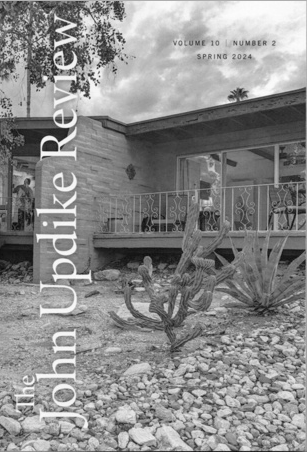 Volume 10, Number 2 (Spring 2024) of The John Updike Review was recently published, and Updike society members have been quick to comment on the stunning cover: a photograph of the Tucson casitas that John and Martha Updike owned and lived in each spring between 2004-2008. The photo was taken by the journal’s editor, James Schiff, when attendees at the 7th Biennial John Updike Society Conference in Tucson had the opportunity to tour the casitas.
Volume 10, Number 2 (Spring 2024) of The John Updike Review was recently published, and Updike society members have been quick to comment on the stunning cover: a photograph of the Tucson casitas that John and Martha Updike owned and lived in each spring between 2004-2008. The photo was taken by the journal’s editor, James Schiff, when attendees at the 7th Biennial John Updike Society Conference in Tucson had the opportunity to tour the casitas.